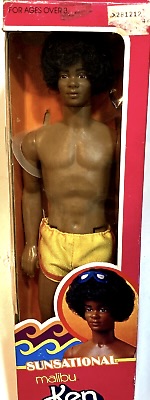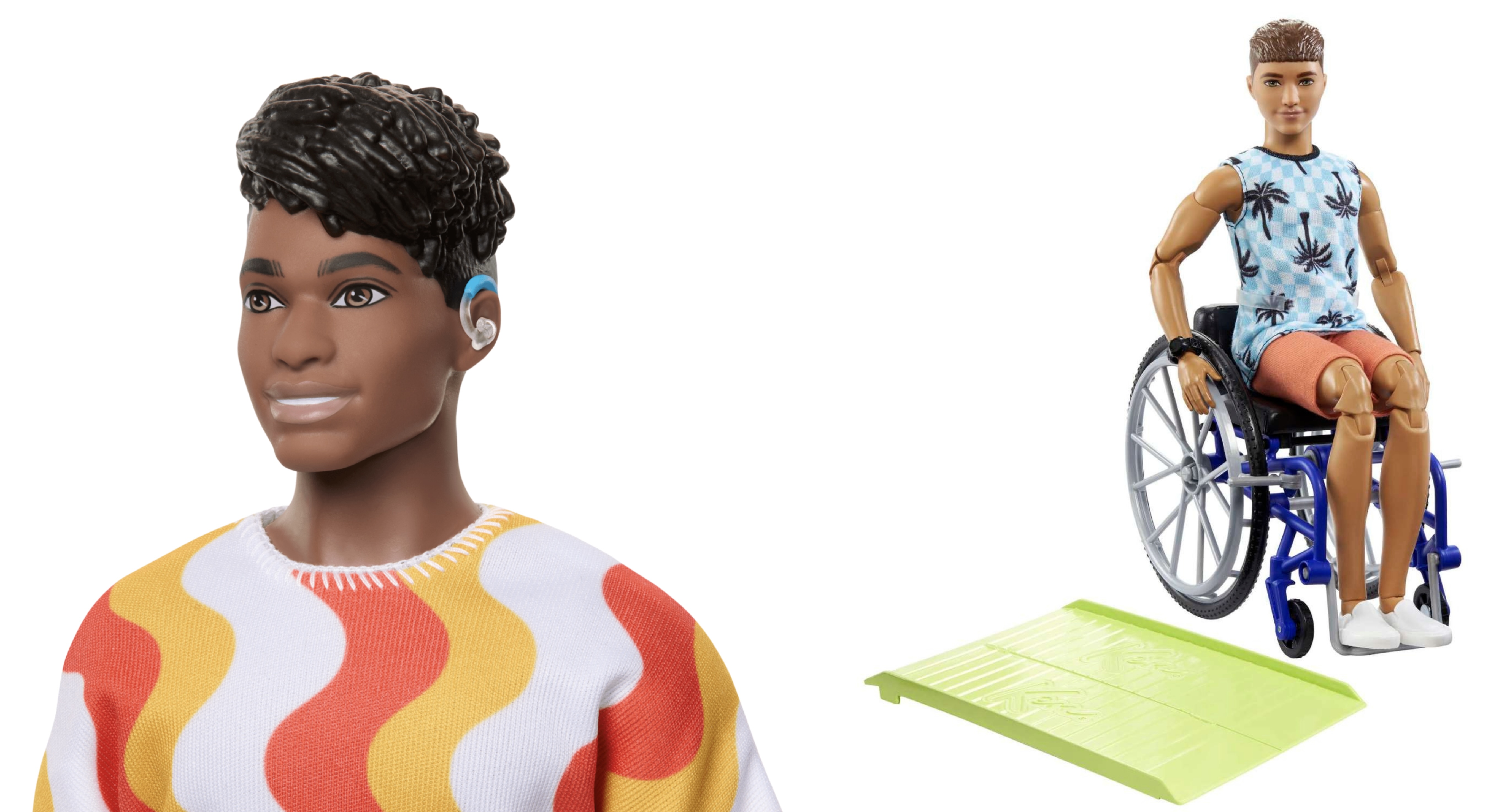

Whilst Barbie is extremely popular, she has also gained a lot of criticism for the image of woman she creates. Originally, Barbie was white, blond, and very thin. In 1968 the first black character was introduced in Barbie’s world (Mattel, n.d.). However, not only Barbie gained criticism for her appearance that represented stereotypical western beauty standards, so did Ken. Like Barbie, he represented the image of a perfect man in western culture, he was white, thin yet muscular and had short straight blond or brown hair. The Ken in this 3D model is no different, he is white, muscular and has a perfectly symmetrical face with piercing blue eyes and voluminous blond hair. His body conforms to the type of male body that people often seek (Brownell & Napolitano, 1995).
Although it is still widely debated how representative the Barbie and Ken dolls are of actual humans’ bodies, Mattel has made significant effort to have more diverse dolls (REF). Indeed, Mattel (n.d.) claims that one of the main aims of the company is to “promote diversity, equity, and inclusion.” In 1980, after twenty years of Barbie’s existence, Mattel introduced the first line of diverse dolls that carried the Barbie name (Mattel, n.d.). Two years late, the Sunsational Malibu Ken doll was introduced, he was the first black Ken doll and had a rooted Afro hairstyle (Barbie Media, n.d.).

Since then, Mattel has worked hard to represent the changing cultural values with regards to diversity and inclusivity introducing Barbies and Kens with differrent body types, skin colours and disabilities. In 2017, for example, Mattel created Kens with three body sizes: slim, broad, and original (REF). These Kens have different hair colours and styles and various eye colours (Wu, 2020; Ahmed et al., 2020). Furthermore, Mattel created the Fashionistas Line of Barbie, a line of Barbies and Kens that represent more diversity than ever before (Ahmed et al., 2020). Today, Barbie and Ken exist with wheelchairs, prosthetic legs, hearing aids, and specific physical conditions such as vitiligo or hair loss (Kurniana & Ellis, 2023). Thereby, redefining “what it means to be a Barbie or look like Barbie” (Wu, 2020) by showing that these conditions exist and can be stylish (Kurniana & Ellis, 2023).